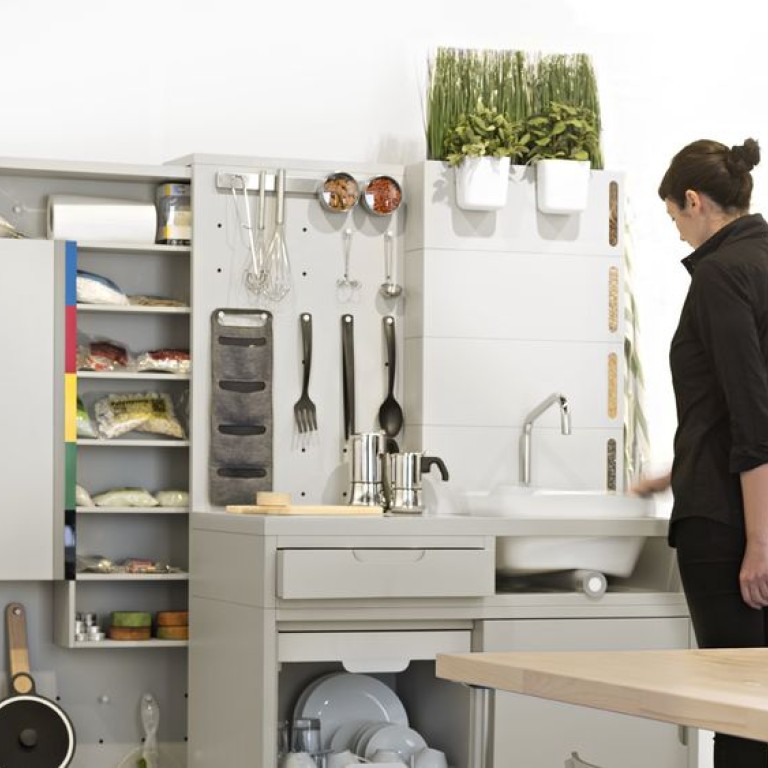
Technology offers new solutions for the mounting food waste problem in Hong Kong
Smart products in the works can check the contents of your fridge and suggest recipes for them
Roughly one-third of the food produced in the world for human consumption every year — approximately 1.3 billion tonnes — gets lost or wasted, according to the UN Environment Programme. And in Hong Kong, food comprises one-third of the solid waste in our landfills.
Food waste has become a growing concern due to a range of environmental, ethical and economic reasons. But as with so many advances already achieved through the internet of things (IOT), technology could become part of the solution.
Researchers in Australia have discovered that a common reason for food waste in the home is that consumers simply don't know what's in their fridge, or how best to use it. Dr Geremy Farr-Wharton, who led the study at Queensland University of Technology (QUT) in Brisbane, sought to find out why people throw food out, and how technology could be used to influence this behaviour in order to reduce food waste.

He found that in most households, there are usually only one or two food buyers – “so if you don't know an apple was bought and can't see it, then you are unlikely to eat it”. Eventually that apple ends up in the bin, which represents waste not just with the apple itself, but along the entire food supply chain. "Improving food location knowledge resulted in the most significant reduction in food waste," Farr-Wharton says.
FridgeCam, a collaboration between QUT and the Technical University of Vienna, can help to accomplish this. It involves a camera positioned within a fridge which takes photos of its contents and uploads them to a website. "The idea is that if you are out shopping and can't remember if you need milk or butter, you just open the website on your smartphone to check your fridge's inventory," Farr-Wharton says.
Another solution from the study was EatChaFood, a mobile app prototype that encourages users to consume their food prior to the expiration dates, including offering meal suggestions based on the food supply and use-by date.
While the study showed that these interventions did indeed reduce food waste, it also found that people's biggest limitation was around a lack of automation within the technology used. “The next step in reducing domestic food waste is to design technology that knows what you have bought, where it is stored and how to use it, so people can focus on cooking and eating," Farr-Wharton says.

Ikea is also researching how technology can influence the way we live. The Swedish homeware manufacturer’s Concept Kitchen 2025, a collaboration with global design firm IDEO London, is based on forecasts for 10 years from now that say water will become an even more precious resource, while food will be 40 per cent more expensive.
One of the imagined resource conservation solutions in Concept Kitchen 2025 - which was staged as a long-running exhibition in Milan, Italy, this year - is to keep food front and centre on full view in an open pantry, using shelves equipped with inductive cooling technology which reduce the need for refrigeration.
Unsure of what to do with fresh produce that is starting to look a bit tired? Place it on the kitchen’s Table for Life, where built-in sensors will recognise which vegetable it is and offer recipe suggestions. This table also eliminates the need for a stove, as hidden induction coils heat the inside of pots and pans, leaving the multifunctional surface free for working, cooking or eating.

The Concept Kitchen’s water-saving sink recycles grey water for washing up or watering plants, and sends contaminated water away to the sewer. The system also captures any organic waste washed down the drain, then dries and compresses it. Non-organic waste gets separated, crushed and vacuum-sealed for collection.
A report by America’s NextMarket Insights sees smart kitchen technologies becoming widely adopted over the next decade, pointing out that one-quarter of cooks say they already routinely use a tablet or smartphone to help in the kitchen.
"Appliance and device makers are integrating smart features at both the high and low end of the spectrum," says Michael Wolf, the company’s chief analyst. "We see significant investment in putting smart features in big-ticket items such as refrigerators and ranges by major manufacturers, as well as strong interest in creating new lines of smaller, more discretionary purchase lines of smart kitchen products such as smart thermometers and scales."
Wolf also foresees smart kitchen technology being used to better understand what we eat, and synchronising this knowledge with personal health and fitness information. “NextMarket believes that coordination of technologies such as HealthKit with smart kitchen technologies like molecular food sensors will enable consumers to make more informed, personalised choices in the future regarding food consumption.”

